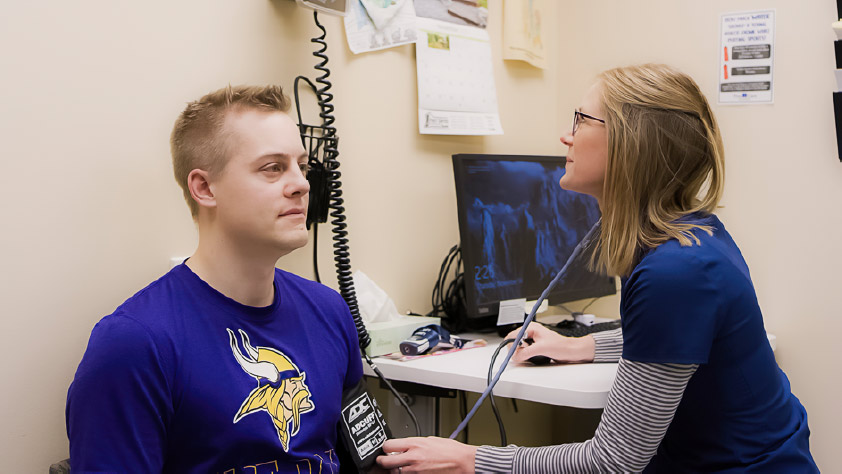Rural residents across America are finding themselves traveling farther and farther for care. But here in ND, health care centers like one in Park River are changing the trajectory of rural health.
First Care Health Center is embracing principles that keep its neighbors healthy and keep care close to home.
“We take care of our own,” says First Care provider Tammy Clemetson. “We want quality care right here for our families and our community.”
First Care has long been a pillar in the community, offering hospital, emergency care, outpatient services, lab and medical imaging capabilities. In addition to advanced medical technologies, First Care has worked with Blue Cross Blue Shield of North Dakota (BCBSND) since 2016 to adopt a patient-centered approach to care.
That undertaking is more complex than simply caring about the patients you treat. It’s a model that affects the way a health care organization conducts business. In just four years, First Care has adjusted its operational model to fully embrace BCBSND’s quality program, BlueAlliance.
A sharp contrast separates traditional and BlueAlliance care models
Patients at Park River and other participating medical facilities won’t likely even know the organization participates in BlueAlliance. The transformation happens quietly behind the scenes, in systems and processes. But its impact is evident.
Traditional care model
With a traditional care model, the focus is on treating a condition rather than the whole person. People typically wait to see a health care provider until they’re sick or have developed a chronic disease.
That type of care not only drives up health care costs, it’s frustrating for patients and providers alike.
BlueAlliance care model
Under BlueAlliance, the focus is on the whole person, maintaining health and avoiding disease. Instead of waiting until they’re sick, people visit providers for preventive medicine and get tips to avoid and manage chronic conditions.
“Providing patient education keeps people engaged in their own health journey,” Clemetson observes. “People can learn to manage their conditions and keep themselves out of the hospital.”
From a business perspective, with a traditional care model, medical facilities are rewarded for treating sick patients. They are paid based on the number of tests they order and procedures they perform. Conversely, BlueAlliance partner providers are rewarded for keeping people healthy.
Success is evident
While patients continue to receive care for existing conditions, First Care has a new level of commitment to preventing potential health problems evidenced by increases in:
- Primary care provider access—patients are cared for by a consistent team that keeps a close eye on their health and coordinates care with other providers
- Well child exams
- Immunizations
- Ongoing screenings for
- Breast cancer
- Colon cancer
- Depression and other behavioral health issues
- Successful condition management—helping people understand and manage conditions so they don’t have to end up in the hospital
So while, according to Modern Healthcare, 21 percent of America’s rural hospitals are at high risk of closing, First Care is thriving. Like others who fully embrace the patient-centered model, they’re providing an improved experience for everyone—patients are healthier, and health care providers are more fulfilled.
